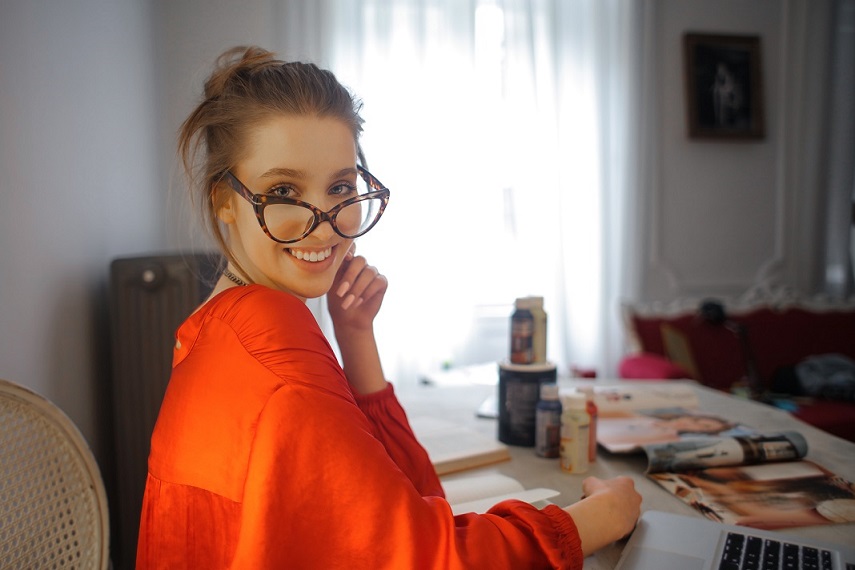What are the signs that can determine the average modern student? Rounded shoulders, poor eyesight, a curved spine … But if you look into the room of almost any student, you will notice that not everyone pays due attention to the workplace where a student spends time doing homework. Unfortunately, well-equipped study space is more likely the exception rather than the rule.
Student success is largely dependent upon the study space. It is much more difficult to concentrate attention at home, but it is absolutely possible. Some are able to “pull themselves together” sitting on the couch with a laptop or a book in their hands, while others need a separate area with a table, a desk lamp, shelves for books and accessories, or even a whole separate room.
In short, a workplace can be organized anywhere – for this, you need only your desire and imagination. Today, the experts from dissertation proposal writing service will talk about how to do it right, so that students can improve their working capacity and achieve excellent results in their studies, and could relax while making pauses.
Since you can arrange your desktop anywhere, we offer several decent options:
– A workplace in the bedroom: it is better to make it by the window, in a closet or niche, without losing even a centimeter of usable area.
– A study space in a closet or pantry is generally a super-economical option when space is used mainly vertically thanks to convenient attachments to the desktop;
– A workplace on the balcony has a number of advantages. It is isolated, hidden from prying eyes and allows you to implement many ideas for a desktop with your own hands. Hang out home-made pots with flowers, make shelves for storing;
– A study space on the windowsill. Transforming the window sill to the tabletop, you get an ergonomic workspace with a gorgeous view. In addition, the workplace at the window is always provided with natural light.
– Another option is a living room with a workplace, where it can not only perform its immediate function. Also divide a room into functional areas if it is centered.
1. Furniture must match the height of a student
A “correct” chair must necessarily be with the back. A correct chair should be chosen so that the feet are completely on the floor and the knees are bent at a right angle. It will also be very good if the height and angle of the backrest are adjusted.
The desktop is first of all not a piece of furniture, but a working tool. And it should be comfortable. The basic rule when choosing a table is that its edge should be a few centimeters below chest level. So that you can safely rest on the edge of the table surface with your elbows. There should be a distance of 8 – 10 cm between the edge of the tabletop and the chest.
There also must be a place where you can store accessories. If there are no drawers in the table, purchase a small cabinet or hanging shelves.
Choosing furniture for a student’s office, it is also worth looking at unusual design solutions. After all, even a comfortable desk and an ergonomic chair can have an original shape. Any student will sit on a stool-saddle or knee-seat chair from a classic headset with great pleasure. Modern young people spend a lot of time at the computer, so in the student’s office, a comfortable stand for a laptop and a soft, wide chair that is comfortable to climb with your legs will not be superfluous. The specificity of some types of training requires special furniture. To work with the drawings, you need a simple rectangular table. Students of creative universities (artists, musicians, cameramen) have their own specifics and their own requirements for the design of a studio room.
2. Color treatment
Anecdotal evidence suggests that a creative person (and a student, of course, is a creative person!) must be surrounded by bright colors and details. Perhaps these are the details, but it is important not to overdo it with rich colors. The fact is that low-key neutral tones help to focus better on the main thing and not to be distracted by trivia. The yellow color positively affects the workflow, increasing activity and helping to focus. But it should not be too bright. It is not recommended to choose blue and purple for the working space, as they reduce the performance. There is no place in the office for the red color: it only causes irritability. The black color helps you to collect your thoughts. It is better to combine it with lighter colors, otherwise, you will get tired quickly.
3. Lighting
For eye health, it is good when the table is located near the window, ideally on the left. However, if there is a lot of sun in the room during the day, it is nice to have blackout curtains or window blinds to darken the room. For lighting, in this case, you can use a desk lamp or a lamp above the table – usually, this light is enough. “Night persons” must always use a lamp with sufficient brightness so as not to spoil the vision during a long stay at the computer at night. Ordinary lamps, LED source models with a clamp are convenient, since then you can fix it in any place or put it on a stand.
A lamp itself should be protected by the ceiling, thanks to which the light is scattered evenly. Thus, recommendations on power – 60.75 watts. This is quite enough for high-quality lighting in the evenings.
Don’t forget to be attentive to details. Your creative mess is good, but folders, organizers, shelves will help you organize your workspace and not lose important documents.
